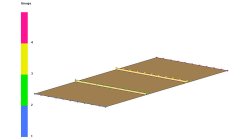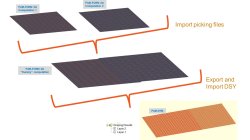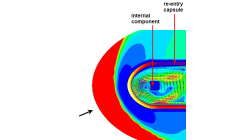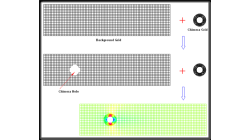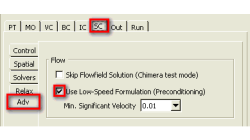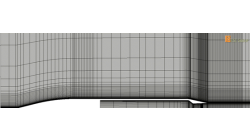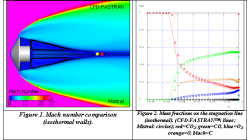- Home
- Resources
- Tips & Tricks
Tips & Tricks
Internal injection lines modeling
Internal injection lines on a shell model (i.e. made of internal element edges) are not supported by the parallel solver.
Mathilde
Chabin
Composites
Direct Opening of a mesh
The creation of a RTM project and loading of the model mesh is usually done in 2 steps.
Mathilde
Chabin
Composites
Coupling between PAM-FORM and PAM-RTM: multiple part mapping
Coupling between PAM-FORM 2G and PAM-RTM is done through a .DSY file. Thus, pre-forming process is simulated with PAM-FORM 2G and resulting fiber orientations that will affect permeabilities are transferred to PAM-RTM model setup.
Mathilde
Chabin
Composites
CFD-FASTRAN/CFD-ACE+ coupling for thermal environment simulations
In certain applications, different regions of the computational domain experiences flow conditions that are so different that it is very difficult for a single solver to produce accurate results at the extremes. In many situations, such problems can be separated and solved using loosely coupled solvers. Each solver is chosen to provide highly accurate solutions for the prevailing flow conditions.
Abraham
Meganathan
CFD
Avoiding Chimera Errors in CFD-FASTRAN
This note discusses a common error encountered by users when trying chimera meshes in CFD-FASTRAN. Such errors are easy to avoid and hopefully this note will assist you.
Abraham
Meganathan
CFD
Motion Model Dependencies in CFD-FASTRAN
Moving-body models available in CFD-FASTRAN are highly suited to simulate complex prescribed and six-degree-of-freedom (6DOF) motions of rigid bodies. In many engineering problems, this translates to multiple bodies moving relative to one another.
Abraham
Meganathan
CFD
Low Mach Preconditioning and Dual Time Stepping in CFD-FASTRAN
Density-based schemes employing time-marching procedures available in CFD-FASTRAN provide excellent stability and convergence characteristics for high-speed compressible flows (typically M >0.5).
Abraham
Meganathan
CFD
Axisymmetric 2D Convergent-Divergent Boattail Nozzle Simulation Using CFD-FASTRAN
The NASA D-1.22-L boattail nozzle configuration was obtained from the MADIC (Multidisciplinary and Design Industrial Consortium) program. The geometry definition and the flow conditions are documented in NASA TP 1766 [1]. This user tip presents a validation of numerical methods against experimental data.
Abraham
Meganathan
CFD
Chemical-kinetic Model for Mars Atmosphere Re-entry Applications
The shock layer flow over a blunt body entering a planetary atmosphere at a hypersonic speed will dissociate and partially ionize. A reliable prediction of the flow-field for such application requires a chemical-kinetic model. For Mars atmosphere, the five species Park'94 is considered [1]. The dissociation of CO2 is producing C, CO, CO2, O and O2.
Abraham
Meganathan
CFD
Improvements to Parallel Simulation Setup in CFD-FASTRAN
Setting up and launching a parallel simulation has become much simpler and easier in FASTRAN. This note discusses some of these developments. Let’s start with things that have not changed. There are still two versions of CFD-FASTRAN solvers for parallel cases. The difference between the two versions is the underlying parallel communication mechanism, the choice of which is decided by the type of mesh used.
Abraham
Meganathan
CFD
